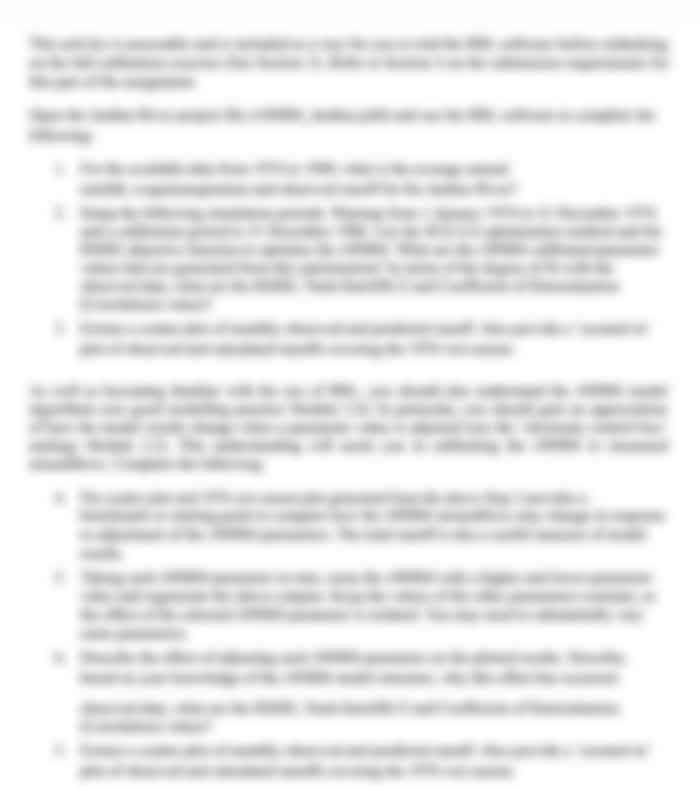Assessment And Planning With Children And Young People In Residential Childcare
1.1 Purpose of assessment
The purpose of the assessment and planning in the context of Residential Childcare is to compile the data relevant to the childs progress, talents, problematic features, and requirements. Ongoing formal comprehensive developmental evaluations allow for recognition of the accomplishments and issues as well as foster ongoing refinement (Lipkin et al., 2020).
1.2 Child-centred model of assessment
Feedback and monitoring of progress are not rigid processes but rather flexible and responsive to the individual child. They encompass aspects such as the childs interests, abilities, and difficulties, adapting the approach to fit the childs needs. This adaptability enables children to participate in their own learning process and optimizes practitioners understanding of childrens social, emotional, and cognitive needs, offering better support (Grindheim, Borgen & degaard, 2021).
1.3 Using assessment frameworks
Assessment frameworks are critical in the process of progressive, applying a structure that provides professionals with structures for observing and making assessments about all spheres of a childs development and welfare, including equality and diversity characteristics such as age, disability, gender, race, religion, and sexual orientation (Schulz et al., 2023).
1.4 Legal requirements for recording assessment
Some legalities that must be considered in recording assessment and planning information in residential childcare are privacy and data protection, as well as accuracy and thoroughness in the compiled documents. Regulatory requirements for child protection and organizational policy are critical considerations in safeguarding children's rights and the issue of transparency in decision-making (Forslund et al., 2022).
2.1 Using child-centred assessment model
Applying the child-centred model entails affirmatively involving the child in the conversation, watching the child's actions, and/or thinking from the child's standpoint (Carter et al., 2024). This way, it is possible to discuss people's priorities and facilitate choices together with professionals, as well as target the requirements, instances of support, and interventions in accordance with what is truly beneficial for them.
2.2 Importance of working with others
Engagement with others, including children and young people, parents and guardians, and other members of the multifaceted team assigned to manage children's needs in residential childcare helps to gain a broad perspective (Liverpool et al., 2020). Such practices improve the organization of operations and are effective in decision-making processes, coordination, and intervention application. There is coordination between all bodies focusing on the child and ensuring that the child's surroundings offer a positive environment that will enhance the child's well-being and development.
2.3 Using methods of engagement
The participation of people in assessment and planning is not just a formality but a cr/social aspect. Their involvement, whether through key work meetings, IRO questionnaires, advocates, or direct questions, empowers them to express their feelings and be part of decision-making processes that affect their lives. This active participation is a critical element in the success of the assessment and planning process (Dalton, Rapa & Stein, 2020).
2.4 Strategies for child-centred assessment
Some of the strategies used are Dealing with them constantly being supported, observing their preferred communication methods, and engaging them through creatively stimulating activities. Engaging them in decision-making, honouring their time, and including reliable adults to help can assist in rejoicing the disengaged children and keeping assessments and plans in trumpet for them (Thakkar, 2021).
3.1 Boundaries of own role and responsibilities
In assessment and planning, it's wise to uphold professionalism by breaching the code of ethics and organizational code of conduct when issuing reports and dealing with specific clients. Duties include providing assessments free from bias, cooperating with other professionals, and considering the child's best interest in the decision-making process (Yung et al., 2022).
3.2 Engaging with children or young people
Interact with the clients by listening and using proper words and body language that suit their age. Make them feel they are wanted and accepted by the company, ensuring they are protected while discharging their duties. Encourage clients to ask questions, be creative, write things independently, and engage with their peers, as this will help the assessor gather their needs, opinions, and expectations directly (Anvari, Hill & Kivlighan, 2020).
3.3 Adapting assessment frameworks
Use the assessment frameworks as a reference to ensure that all client information is obtained regarding the physical, emotional, social, and cognitive domains (Laland & Seed, 2021). Dial down the frameworks by considering the kid's situation, choice, and age or developmental period.
3.4 Working with child or young person
Cooperate, describe strengths, areas of difficulty, and difficulties. Explain the goals and targets in simple and easily understandable language, using language understandable for age and ability. Be sure that the goals are realistic and correspond to the client's interests and needs (Latham, 2020).
3.5 Identifying targets and goals
The objectives and aims set by working with children and young people are precise and inspiring. They act as goals that people use to evaluate their progress and thus build up confidence in themselves and their abilities (Latham, 2020).
3.6 Developing a plan
Collaboration is key. By consulting with the child, caregivers, and other professionals in formulating a strategy, we can ensure that everyone's needs and perspectives are considered. This collaborative approach, which involves the establishment of clear goals, methods, and timeframes, allows for flexibility in implementing modifications based on the results obtained (Jobes, 2023).
3.7 Confirming and agreeing to the plan
Summarize and agree to the plan through the discussion, using clear and easily understandable language and pictures. Everyone should be allowed to ask questions or state any concerns for clarification. Provide records of agreements in written form or some other easily understandable format so that commitment and accountability standards are high in 'residential child care' (Parker, 2021).
4.1 Understanding roles and responsibilities
Facilitate by clearly defining who is to do what in terms of cooperation. Explain in simple terms and with pictures every single contribution and expectation that the team members, from young children to adults, have. Engage in frequent communication and meetings to remind and discuss the comprehension and implementation of the plan, along with the identified problems and difficulties in childcare residential facilities (Martin & MacDonald, 2020).
4.2 Encouraging the child or young person
By motivating accomplishment even in small activities, stressed workers should be encouraged to do more. The main general principles include offering positive incentives and constructive feedback. Provide a sufficient atmosphere that triggers them to appreciate and feel self-reward (Yee & Zolkipli, 2021).
4.3 Ways of recording progress
Determine the procedure by comprehending the interests of both and recording methods to be used. It is recommended to use tools that the child understands, such as charts, diaries, or electronic applications appropriate to the child's age. Comply with organizational and regulatory measures regarding client confidentiality and data security (Yee & Zolkipli, 2021).
4.4 Recording progress or a child or young person
Achievements, challenges, and observations should be documented in writing from time to time. It is advisable to use measurements, which are both pursuing objectives and targets that are mutually agreed to be set. Integrate quantitative data regarding different aspects of children's growth and development (Arajo et al., 2021).
5.1 Importance of reviewing and updating plans
Planning requires constant review and subsequent amendments to conform to the dynamic nature of the child or youth's needs and achievements (Yuliantini et al., 2023). It enables timely modification, addresses new issues, and integrates feedback, which enhances efficiency and optimal performance in residential childcare.
5.2 Reviewing the goals progress
Returning to the case, promote teamwork by arranging for the child, those taking care of them, and other professional caregivers to schedule regular meetings to discuss the care plan (Salas et al., 2020). Talk about changes made, how goals have been accomplished, and what problems may have been encountered.
5.3 Identifying aspects of the plan
These are found by documenting the goals realized, receiving recommendations, and recording advancements. Specifically, focus on the segment that requires improvement due to the failure to achieve specific objectives, the existence of recurrent issues, and critics (Sanchez et al., 2023).
5.4 Outcomes of review
The plan should be updated based on the reviews' outcomes, whereby aspects such as feedback received and progress observed are implemented (Sanchez et al., 2023). Based on the identified successes and challenges, goals, strategies, and timelines need to be revised.
5.5 Agreeing the updated plan
Record the progress and proposed changes by discussing them with the child, caregiver, and professionals and agreeing on the new plan. Choose simple and easily understandable words appropriate for children (Zimmermann, Pittet & Curtis, 2021). Discuss with all of the participants, especially voicing these questions and making sure everyone will hear opinions from everyone.
6.1 Explaining own roles
In the external assessment process, a person offers information, guides the child, and liaises with other assessors. Other parts involve affiliate evaluators, such as parents or guardians, who give an account of the child's experiences in day-to-day life (Ramasubbu & Bardhan, 2021).
6.2 Responding to requests for information
Deals with information calls by courteously searching and presenting proper, pertinent information. Comply with the organizational policies concerning issues of confidentiality and data protection. Format the documents in a standard manner and be concise (Ramasubbu & Bardhan, 2021). Cooperate on the request only after it is ascertained that the recipient is authorized to make the request and only for the intended purpose that they have provided in the request.
6.3 Supporting the child or young person
Facilitate the child by explaining the assessment procedure, easing worries, and promoting inquiries. Adopt a level of simplicity that is easy for children of that tender age to understand (Kopetz & Steiner, 2022). Engage them for their input; make them feel they can express themselves within the organization.
Are you struggling to keep up with the demands of your academic journey? Don't worry, we've got your back!
Exam Question Bank is your trusted partner in achieving academic excellence for all kind of technical and non-technical subjects. Our comprehensive range of academic services is designed to cater to students at every level. Whether you're a high school student, a college undergraduate, or pursuing advanced studies, we have the expertise and resources to support you.
To connect with expert and ask your query click here Exam Question Bank

